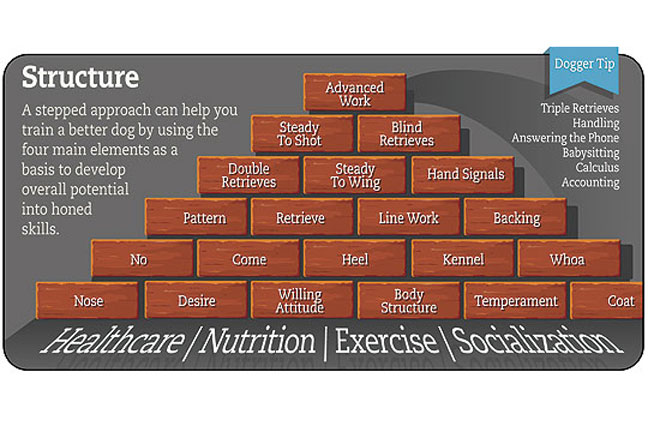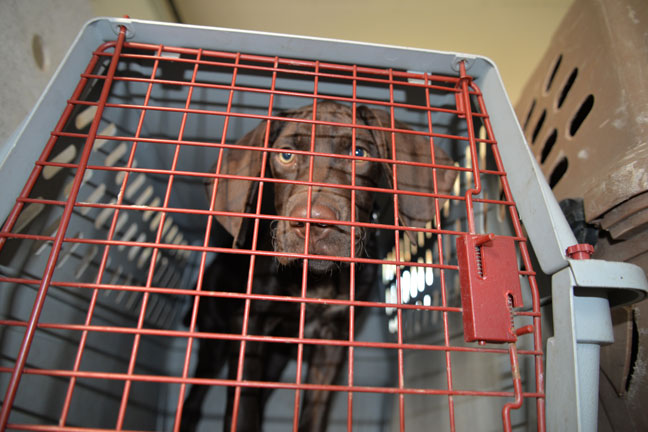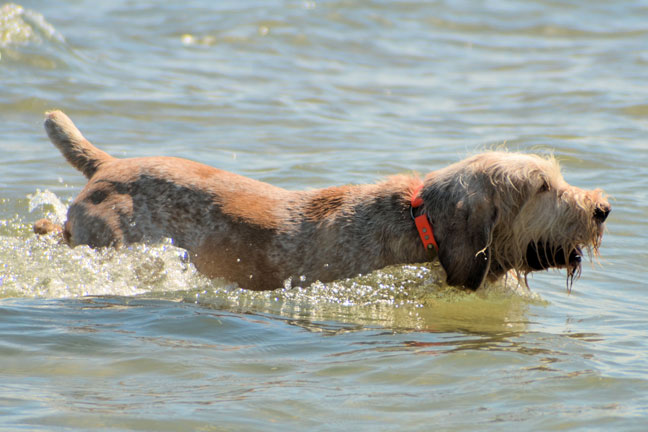Life comes at a pup from all directions in its first year. It's fun and exciting but sometimes intimidating--a time when we have to be careful in our approach as we guide, expose and monitor. We hope to build on the positive and help them fully realize their predatory instincts and gain self-confidence, yet avoid bad habits.
We're also blending in the basics of obedience so it's a real balancing act, but for most of us it's a rewarding experience when we start training a hunting puppy.
Where do we start? I feel an overall perspective on our part should come first: understanding how important inherited characteristics are, how proper socialization fits in and which learned command to build on first. A clear picture of our task better enables us to sort out various aspects and see how each fits as we plan training sessions.
I often use the graphic in this article to help visualize how I see a solid program coming together, and the part each aspect plays.

As you can see, when we imagine the dog itself as our foundation, it becomes evident how important a role selective breeding plays into a dog's potential for overall success. Key genetic attributes are nose, a keen discriminating sense of smell; desire/work ethic, an internal drive to continue work when the going gets tough; cooperation/biddability, a natural attentiveness to its handler plus an eager-to-please attitude; coat and conformation, a body structure built for strength and endurance, and a coat that wards off the elements and abrasive cover while hunting; mental stability, a balanced temperament supporting self-confidence when faced with adverse and ever-changing situations common in the hunting environment; and finally, pointing and retrieving instinct.
With these foundation blocks in mind, I suggest we think of proper socialization as the "mortar" that bonds and holds our building blocks in place as we continue to build. Let's also assume proper health care, nutrition and exercise are components of the mortar.
Granted, this graphic oversimplifies, but it does point to the importance and interdependence each aspect contributes to the probability of a successful outcome.
We also see it is possible to work on more than one aspect of our dog's development at a time. For example, we can expose a young dog to the neighborhood while getting him used to walking on lead or working on beginning "heel" training. Or we can help a friend in his advanced training and bring our pup along as a way of introducing him to travel. We can let our pup run and explore open fields while trailing a check rope to begin to establish control.
Expanding our pup's world step by step from the living room to the backyard to the hunting or training fields, socializing pup with other dogs, introducing him to travel crates, boats, game birds, guns and gunfire--all of these should come into play during the first year.
Imagine attempting some aspect of training on your pup's first day afield if he had no previous exposure. It would be foolish to expect the pup to be attentive, able to focus or capable of learning because there are just too many exciting things, all unfamiliar, possibly even scary, but in every case distracting. That's why it's critical to expose our pup to as many different scenarios as possible.
It's helpful to take a minute to lay out a plan and list the pieces. Decide where your pup is in the process of becoming acclimated, what has and hasn't been covered, where you need to build and what your next step should be. Keep notes, especially after training sessions.
I make notes of what progress was made, where my next session should begin and any concerns I might have. Doing this forces us to rethink and make better choices as we continue socializing the pup to all aspects of the hunting dog world, and as we begin to lay in some of the basic commands.
Fitting in the actual commands should begin with the everyday good-citizen stuff like "no," "sit" and "heel." These all support advanced work. The following are some other must-cover areas to prepare our youngster for field work.
CRATES
At home and for travel, a dog crate is key to a young dog's training and safety. At-home crate training begins the first day you bring your pup home. Once the pup is comfortable and actually enjoys the crate, move it to your car and take short trips at first.

Go to an area where you can let the pup out and have some fun. If all early trips are to the vet where the pup gets stuck with a needle, he won't be too anxious to load up on training days.
DOGS AND PEOPLE
Socializing your young dog with other dogs early on just makes good sense. Playing with family members and other dogs you own is a start, but the more exposure you can provide, the better. Trips to the park or a basic obedience class all play into forming a solid, well-adjusted dog.
OPEN FIELDS AND HEAVY COVER
There's scary stuff out there for a young dog. It's easy to overlook the importance of familiarizing your youngster with big, open cover, brush and timber, but you're going to train in and eventually hunt those areas.
So let him run free to explore the fields, the shadows and to chase meadowlarks and game birds. This kind of fun nurtures predatory drive and builds confidence, in addition to building body, strength and endurance.
WATER WORK
Even dogs primarily used for upland hunting are going to have to cross a creek occasionally, and very likely have an opportunity to retrieve a pheasant from a cattail marsh. Proper introduction to water and swimming now will pay off later.

BIRDS
I suggest setting up in a quiet area away from other distractions and using a cold, dead pigeon for the first exposure. A cold pigeon won't flop and frighten a timid pup and is less exciting to a stronger-willed pup. In either case, keep the pup calm.
GUNS AND GUNFIRE
No dog is born gunshy. I agree that some of softer temperaments are more prone to become gunshy, but by being especially careful, we can bring the majority to understand that the sound of gunfire signals the reward of down game--and a chance to retrieve.
By now, I'm sure you can see the importance of early socialization and exposure, and with a little planning you can be sure to cover all the bases. You'll find this aspect of training enjoyable and well worth the time. Best of luck with your pup!






